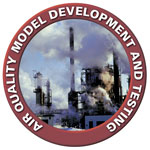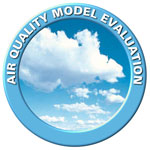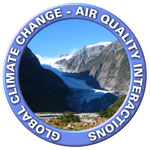New Updates
Review of Near-Roadway Models
(PDF, 40 pp, 1.19MB)
The Atmospheric Modeling and Analysis Division (AMAD) leads the development and evaluation of predictive atmospheric models on all spatial and temporal scales for assessing changes in air quality and air pollutant exposures, as affected by changes in ecosystem management and regulatory decisions, and for forecasting the Nation's air quality. AMAD is responsible for providing a sound scientific and technical basis for regulatory policies to improve ambient air quality. The models developed by AMAD are being used by EPA, NOAA, and the air pollution community in understanding and forecasting not only the magnitude of the air pollution problem but also in developing emission control policies and regulations for air quality improvements. AMAD applies air quality models to support key integrated, multidisciplinary science research. This includes linking air quality models to other models in the source to outcome continuum to address effectively issues involving human health and ecosystem exposure science.
Research Programs:
 |
Model Development and Diagnostic Testing Through detailed simulation of various physical and chemical processes such as horizontal and vertical transport, diffusion, emissions, deposition, chemistry, and cloud processes, comprehensive Eulerian air quality models attempt to account for most major processes in the atmosphere that are considered key in determining the distributions and levels of the atmospheric chemical species. Research in this theme can be broadly categorized into four major areas of emphasis:
|
 |
Model Evaluation - Establishing Model’s Credibility The Division’s model evaluation program has been designed to assess CMAQ modeling system performance for specific time periods and for specific uses of the model. Further, it has been a priority to identify improvements needed in model processes or inputs and to better characterize model uncertainty. The Division has developed a framework to describe these different aspects of model evaluation under four categories:
|
 |
Climate Change and Air Quality Interactions The Division’s climate-related research began in 2002 as a collaborative project on the potential impacts of future climate on air quality. Linkages were developed with global scale climate and chemistry modelers and their tools for regional climate scenarios via downscaling. The modeling approach was to separate climate effects from future emission changes. Global climate and air chemistry models are used to provide boundary and initial conditions for regional climate/meteorological models (e.g., MM5) and regional air chemistry models (e.g., CMAQ). Baseline studies of current climate and air quality are contrasted with simulations of projected future conditions. In addition to changing climate conditions affecting air quality, changing air quality conditions can also affect climate. This research is also developing integrated management tools including both climate impacts on air quality and air quality impacts on climate to assess how air quality management decisions are affected by and effect future climate. |
 |
Linkage of Air Quality and Human Health This research theme seeks to link air quality modeling tools with human exposure and health outcomes. The Division develops methods that couple urban/regional air quality modeling results (from CMAQ) with near-field dispersion modeling results (from AERMOD), which are then integrated directly into EPA exposure models (the Stochastic Human Exposure and Dose Simulation [SHEDS] model and the Hazardous Air Pollution Exposure Model [HAPEM]). This research also encompasses work on urbanized versions of meteorological models, and the investigation of sub-grid scale spatial variability in urban areas. A current focus area for research is improving the spatial characterization of air pollution near roadways. Lastly, the Division’s “accountability” research uses regional air quality modeling to assess the effectiveness of air quality regulations with respect to health outcomes through the development of indicators that capture changes in source emissions, ambient air concentrations, exposures, and health. |
 |
Linking Air Quality and Ecosystem Health This research theme advances the development and application of state-of-the-science tools to determine the exposure to atmospheric pollution causing and contributing to current ecological degradation. The research also advances and develops the application of causal diagnosis tools, methods and models, providing an improved ability to forecast the impacts of various management actions on future atmospheric deposition. The research may be categorized into three interrelated areas:
|
![[logo] US EPA](https://webarchive.library.unt.edu/eot2008/20090511230835im_/http://www.epa.gov/epafiles/images/logo_epaseal.gif)